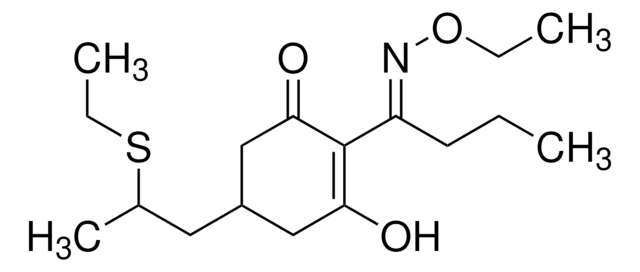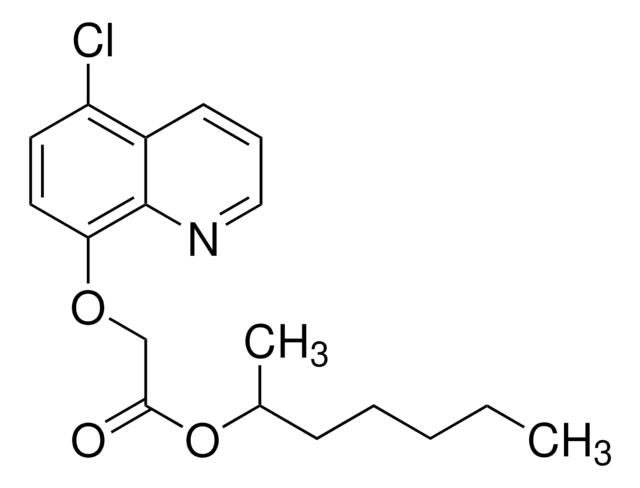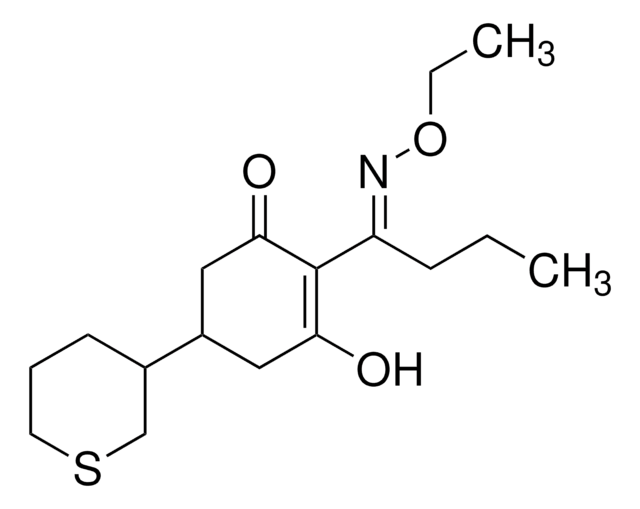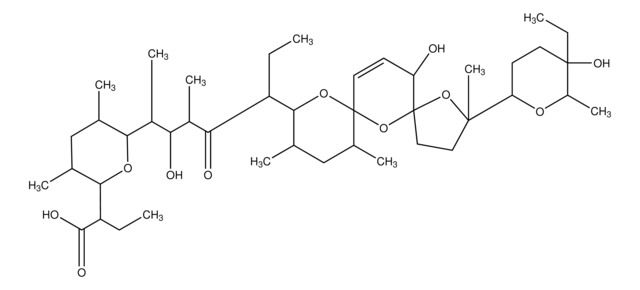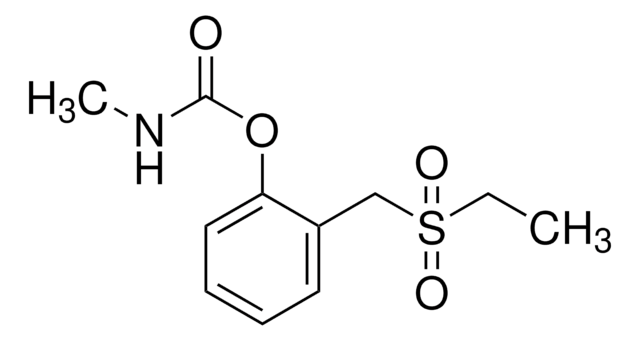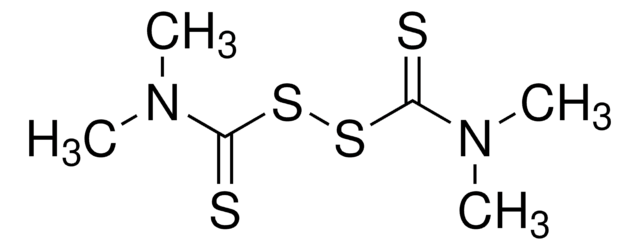36795
Sethoxydim
PESTANAL®, analytical standard
About This Item
Produits recommandés
Qualité
analytical standard
Niveau de qualité
Gamme de produits
PESTANAL®
Durée de conservation
limited shelf life, expiry date on the label
Technique(s)
HPLC: suitable
gas chromatography (GC): suitable
Application(s)
agriculture
environmental
Format
neat
Température de stockage
−20°C
Chaîne SMILES
CCC\C(=N/OCC)C1=C(O)CC(CC(C)SCC)CC1=O
InChI
1S/C17H29NO3S/c1-5-8-14(18-21-6-2)17-15(19)10-13(11-16(17)20)9-12(4)22-7-3/h12-13,19H,5-11H2,1-4H3/b18-14+
Clé InChI
CSPPKDPQLUUTND-NBVRZTHBSA-N
Vous recherchez des produits similaires ? Visite Guide de comparaison des produits
Description générale
Sethoxydim is not approved for its use in the European Union. Maximum residue levels (MRLs) have been set according to Reg (EC) No 839/2008 for sethoxydim (to be calculated as the sum of sethoxydim and clethodim including degradation products) for various products of plant and animal origin from 0.05 to 1 mg/kg.
Application
The analytical standard can be used to:
- Study the inhibition effect of acetyl-CoA carboxylase in barley chloroplasts using cycloxydim, sethoxydim, and clethodim herbicides
- Study the photochemical changes and oxidative damage in four foxtail millet varieties after exposure to sethoxydim
- Study the resistance mechanism of chloroplastic acetyl-CoA carboxylase from green foxtail (Setaria viridis L. Beauv.) towards cyclohexanedione herbicide sethoxydim
- Study the inhibition mechanism of acetyl-CoA carboxylase by sethoxydim and haloxyfop using a semipurified enzyme preparation extracted from black Mexican sweet maize
- Evaluate the tolerance of 11 grass species used in minimal-to-no-mow turf areas to three postemergence herbicides applied at one- and twofold recommended label rates
- Generate sethoxydim-resistant mutants of Micractinium sp. by UV-C mutagenesis for increased cellular triacylglycerol (TAG) without compromising on growth rate
Informations légales
Mentions de danger
Conseils de prudence
Classification des risques
Aquatic Chronic 2
Code de la classe de stockage
10 - Combustible liquids
Classe de danger pour l'eau (WGK)
WGK 2
Point d'éclair (°F)
Not applicable
Point d'éclair (°C)
Not applicable
Équipement de protection individuelle
Eyeshields, Gloves, type N95 (US)
Faites votre choix parmi les versions les plus récentes :
Certificats d'analyse (COA)
Vous ne trouvez pas la bonne version ?
Si vous avez besoin d'une version particulière, vous pouvez rechercher un certificat spécifique par le numéro de lot.
Déjà en possession de ce produit ?
Retrouvez la documentation relative aux produits que vous avez récemment achetés dans la Bibliothèque de documents.
Notre équipe de scientifiques dispose d'une expérience dans tous les secteurs de la recherche, notamment en sciences de la vie, science des matériaux, synthèse chimique, chromatographie, analyse et dans de nombreux autres domaines..
Contacter notre Service technique